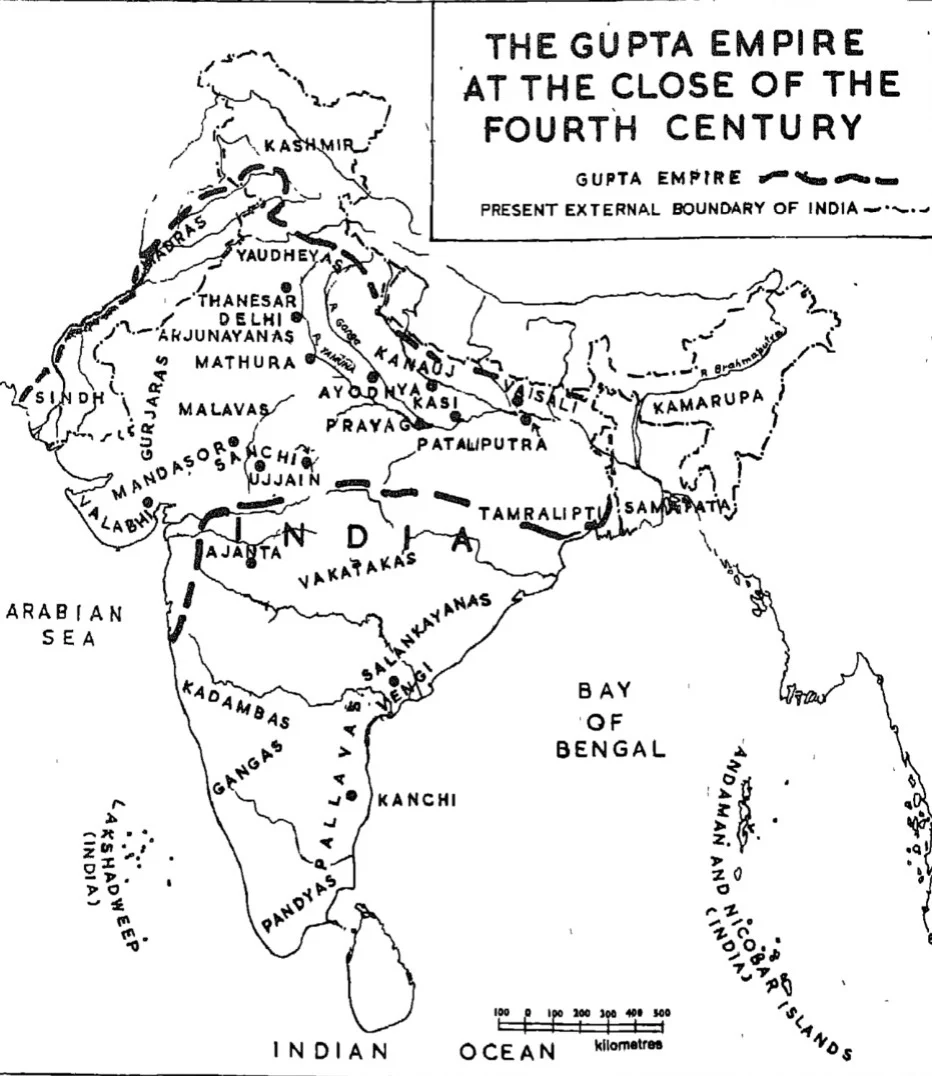![]() May 9, 2024
May 9, 2024
![]() 19767
19767
![]() 0
0
The Gupta Empire emerged in ancient India around the 3rd century AD, following the decline of previous dynasties like the Satavahanas and Kushans. Despite not being as vast as the Mauryan Empire, the Guptas ruled with a strong central government, uniting North India for over a hundred years. Their administration, marked by political titles and a feudal system, played a crucial role in shaping the empire’s governance and stability.

| DESIGNATION | ROLE | DESIGNATION | ROLE |
| Mantriparishad | Council of ministers | Akshapataladhikrita | Keeper of royal records. |
| Amatyas or Sachivas | Executive officers in charge of various departments | Saulkika | Collector of customs and tolls |
| Sandhivigrahaka | Minister for foreign affairs, war and peace | Uparikas | Provincial Governor |
| Mahabaladhikrita and Mahadandanayaka | Superior posts in army | Mahapratiara | Chief of the palace guards |
| Mahashvapati | Commander of Cavalry | Khadyatapakita | Superintendent of the Royal kitchen. |
| Dandapashika | The chief officer of the police department. | Dutakas | Spies |
| Pilupati | head of the elephants department. | Asvapati | Head of the horse department. |
| Narapati: Head of footsoldiers | |||
| Must Read | |
| Current Affairs | Editorial Analysis |
| Upsc Notes | Upsc Blogs |
| NCERT Notes | Free Main Answer Writing |
Conclusion
The Gupta Empire left a lasting legacy in ancient Indian history through its efficient administration and governance. With a centralized government structure, hierarchical titles, and a well-defined feudal system, the Guptas maintained order and stability across their realms. Their judicial system, advancements in governance, and innovative administrative practices set a benchmark for future dynasties, leaving behind a significant imprint on the political landscape of ancient India.
<div class="new-fform">
</div>

Latest Comments